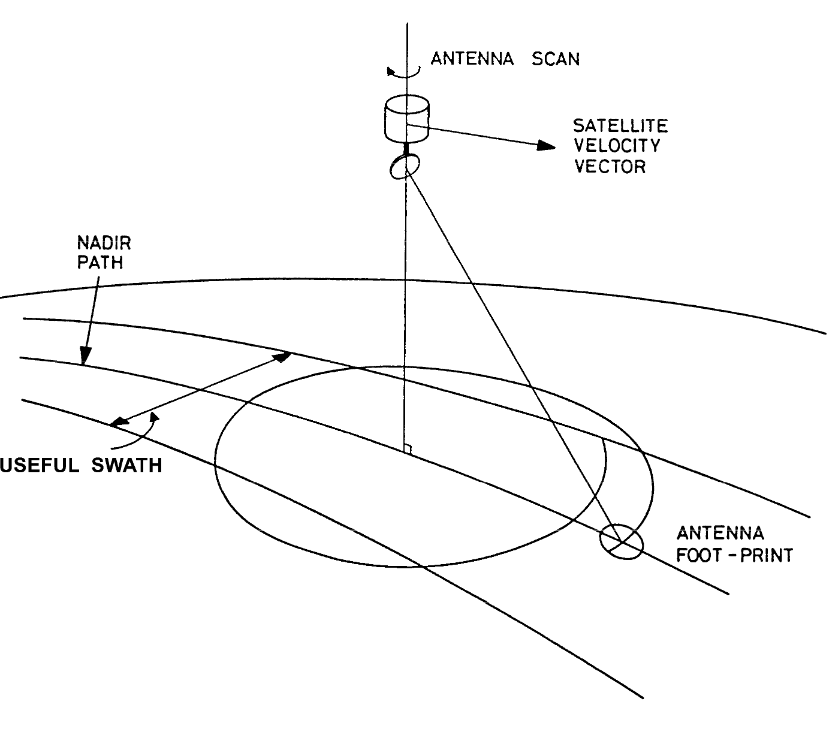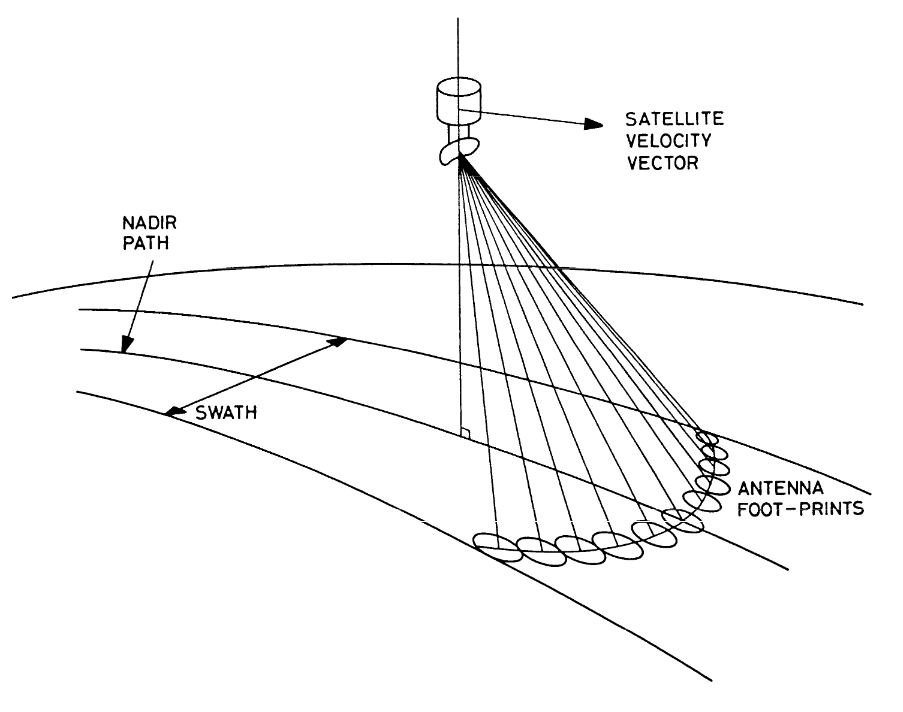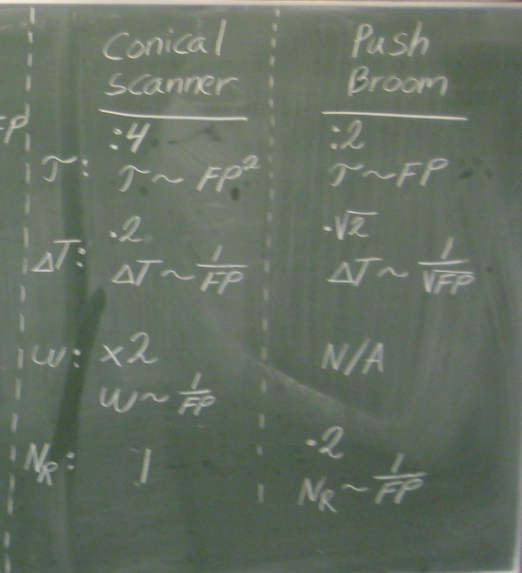Two types:
- Reciprocating: Rotate in both directions
- Rotating: Only rotate in one direction
Line scanning

Reciprocating:
- [-] Very difficult motion
- [-] Varying incidence angle
- [+] Always pointing to the swath
- [-] Does never point into space (calibration)
- [-] Integration time not constant
Rotating:
- [+] Free time to calibrate
- [+] Better motion
- [+] Time wasted looking into space (calibration)
- [+] Well suited for TPR (Total power radiometer)
Conical scanning
Reciprocating

Rotating

Reciprocating:
- Almost constant incidence angle
- Difficult motion Rotating:
- Better motion
- still some time wasted
- well suited for TPR
Push-broom

- Long integration times
- More complex system, more expensive, more power, etc.
- Redundancy
- No motion
- No time wasted
- Well suited for NIR
Antenna beamwidth is not a well defined term, the best way is to say -3dB angle.
$$ \text{Antenna beamwidth} = \theta \approx 1.4 \frac{\lambda}{D} = \frac{\text{Wavelength}}{\text{Aperture}} $$ FP = Foot print
¿How the foot print affect to different parameters? ¿What happen is FP is getting shorter?

\(\Delta T\) refers to integration time per pixel.
Soil moisture (SM):
$$ T_B(f, \theta, SM, \text{crop density}, \text{soil type}, \text{polarization}) $$
Ocean salinity, Sea Surface Salinity (SSS)
$$ T_B(f, \theta, SS \ \text{salinity}, SS \ \text{temperature}, \text{wind speed}) $$